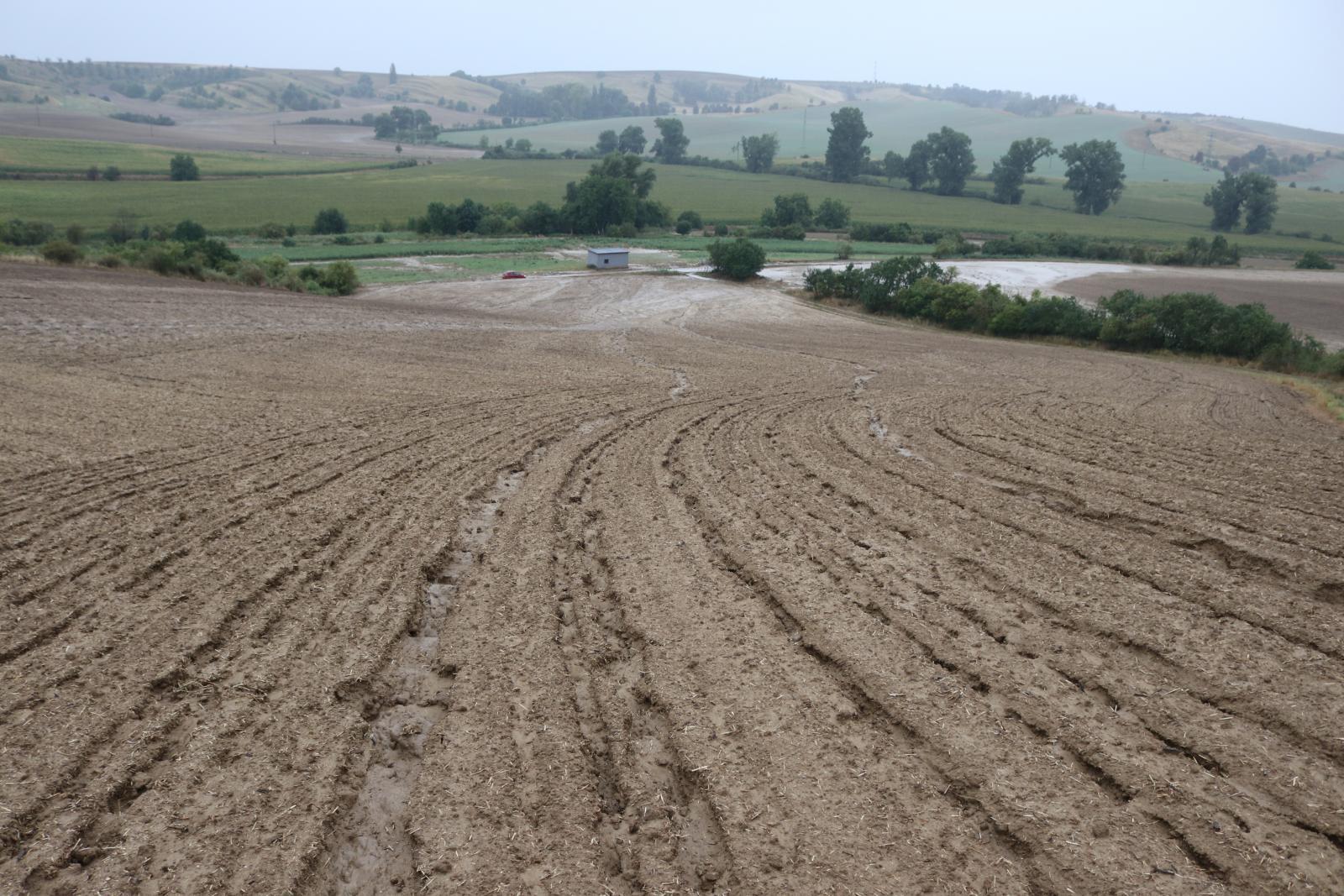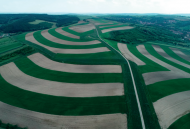Ideas and discoveries
21 February 2024
Soil erosion will be prevented by strip crop rotation technology

Torrential rains in the Czech Republic wash away more than 21 million tons of topsoil every year, which ends up in waterways, ditches or water reservoirs. Belt crop rotation technology can offer a solution. It can prevent water erosion of the soil, prevent its overheating and retain water in the landscape. Certified methodology applicable to the Czech environment has been jointly developed for the last 4 years by experts from the Brno University of Technology, Palacky University Olomouc and Mendel University.
The method of strip crop rotation originated approximately 100 years ago in the USA. Although it is a demanding way of organizing anti-erosion protection, it has gradually spread throughout the world. With the advent of climate change, it offers soil protection during torrential rains, as it significantly increases the retention capacity of the landscape and allows water to be retained in the landscape.
"If precipitation falls on unprotected land, approximately 70% will run off. However, if precipitation falls on the area where our method is applied, a large percentage of the water will soak into the given location," explains Miroslav Dumbrovský from the Institute of Landscape Water Management at FCE BUT, who collaborated with Bořivoj Šarapatka on the development of the method as part of the TAČR project.
More than half of the agricultural land in the Czech Republic is threatened by water erosion. The essence of the methodology is the use of the protective effect of specific types of plants. "In narrow strips, protected crops with a low anti-erosion effect - such as root crops, corn or rapeseed - alternate with strips of protective crops with a high anti-erosion effect - such as grasses, densely sown cereals or legumes. It is important to establish these strips in a direction that follows the contour," adds Dumbrovský.
Belt rotation of crops is especially advantageous for sloping terrains, which are most at risk of soil water erosion. "During torrential rainfall, the water flowing off the slopes picks up speed, erodes the soil and often transports it into reservoirs or watercourses. The damage is not only ecological, but also economic – the cost of lost topsoil can be up to CZK 40,000 per hectare per year. Soil retained in reservoirs and waterways must then be mined, creating additional costs. There are about 4.5 million cubic meters of sediment in the Brno dam alone," describes the researcher.
While the experts from FCE BUT focused on the water management and technological challenges of applying the method during the four-year project, the team from Palacky University investigated the impact of crop rotation on biodiversity.
“This anti-erosion technology has been shown to greatly support macrobiotics. It not only increases the number of animals and insects in the landscape, but also significantly increases the diversity of the soil edaphone – the amount of bacteria, fungi and algae that increase the retention capacity of the soil," explains Dumbrovský. In addition, it reduces the risk of fires spreading during the harvest season.
Successful implementation of the technology requires a trained professional to design a plot suitable for contour tillage. It evaluates the runoff conditions – it calculates the basic characteristics of the direct runoff, i.e. where the water flows from and in what quantity.
"It all starts with the design of a directional trajectory, according to which the individual belts are then defined. The system consists in designing protective and protected belts, the required width and parameters of which are calculated according to our methodical instructions," he adds.
The strips of crops with different anti-erosion effects are alternated in such a way that in case of intense rain, the water flowing from the protected strip is captured and soaked in the protective strip. The individual strips are approximately the same width - around 20 to 40 meters. The width of the belt should correspond to a multiple of the engagement of the agricultural machinery to enable efficient cultivation of the soil.
In addition, belt rotation of crops reduces overheating of the land and thus improves the productivity and climate of the cultivated plants. The narrower width of the belts also prevents the clustering of black game, which causes damage to crops and is also a predator of smaller animals. In the case of large ropes, animals are killed by agricultural machinery. However, if the field is divided into strips and the agricultural technology moves along only one strip, the game has a chance to move to a secondary strip that will provide it with protection.
The researchers first tested the technology on an area of 300 hectares, currently strip crop rotation is applied on almost 2 thousand hectares in the Vyškov region.
The certified methodology was created with the support of the Technology Agency of the Czech Republic and the Ministry of the Environment within the Environment for Life program. It will serve as a guide for organizational changes in anti-erosion protection, and it will also be available to the State Land Office, which will make the technology available to developers of proposals for land improvements or owners of agricultural land.
(mar)
BUT experts address climate challenges, floods, and the future of Czech water
Microplastics in drinking water will increase
Surveyors from BUT save cultural monuments
Greener brickmaking: New technologies from FCE BUT reduce carbon footprint
Sustainable energy projects are not a luxury. They can save and make money

